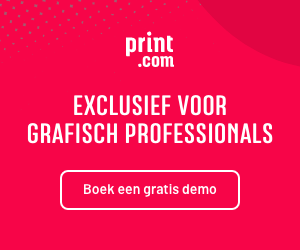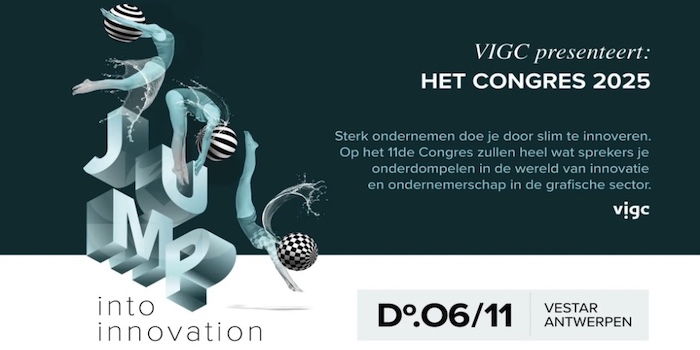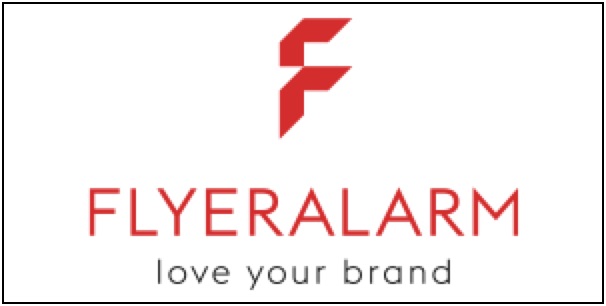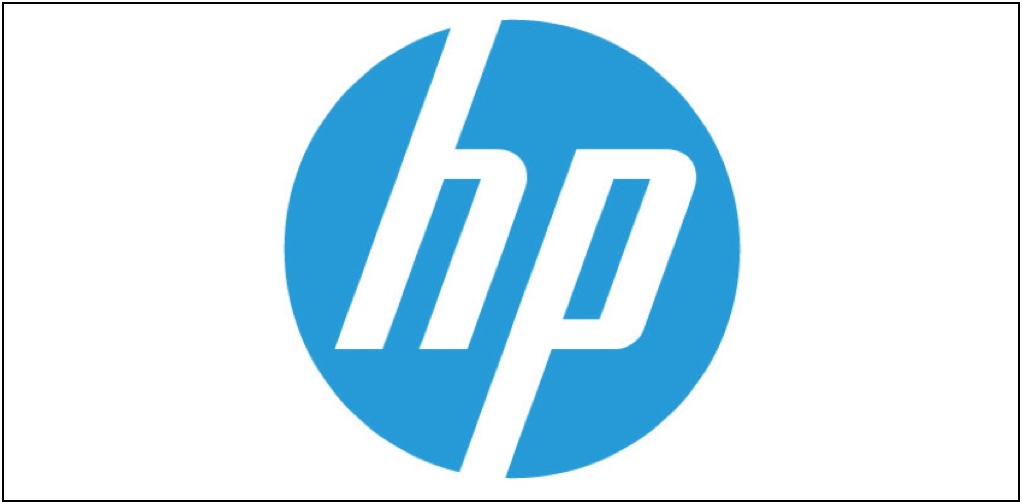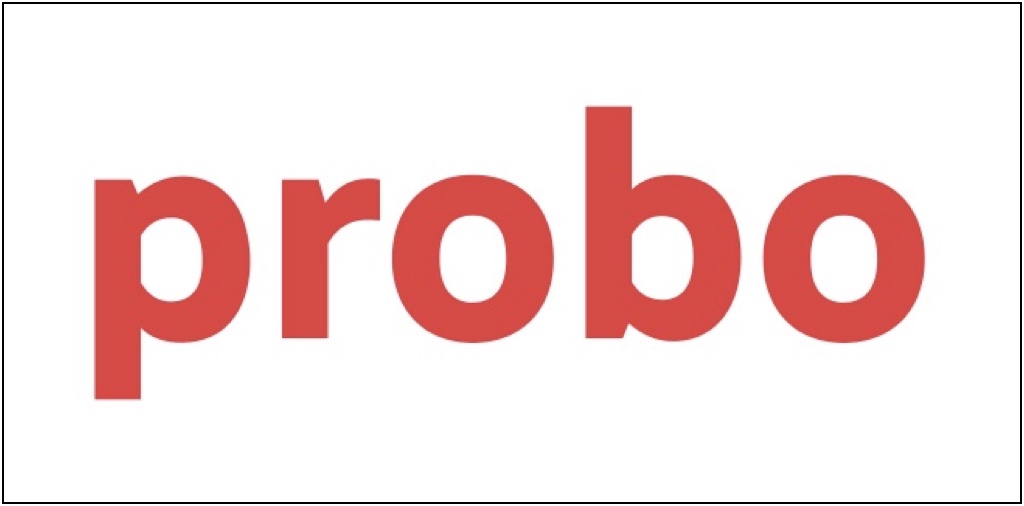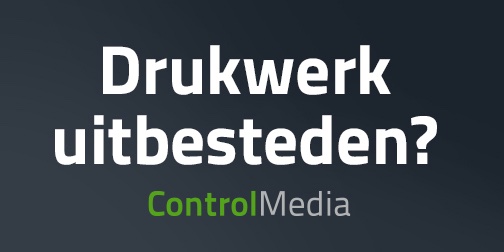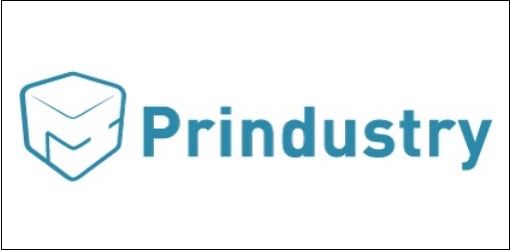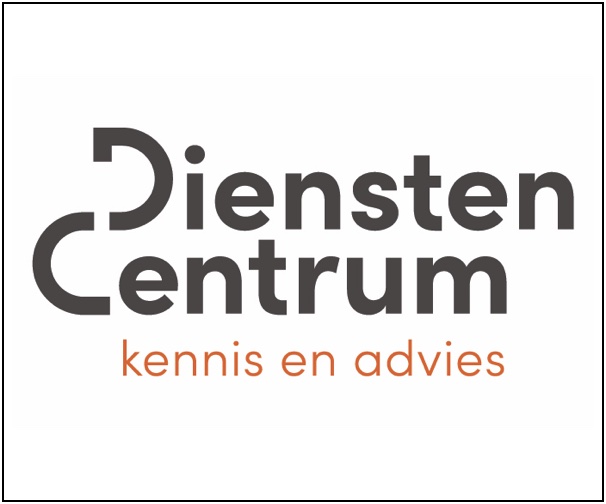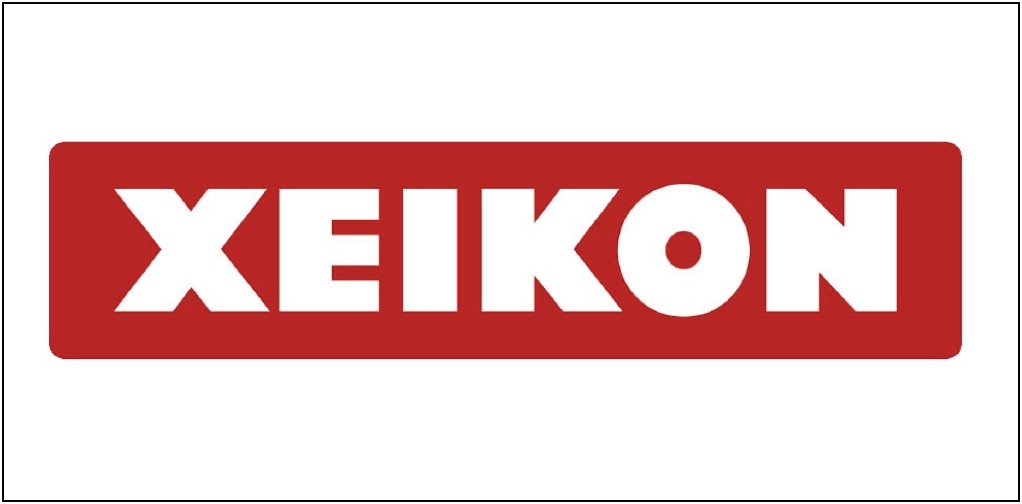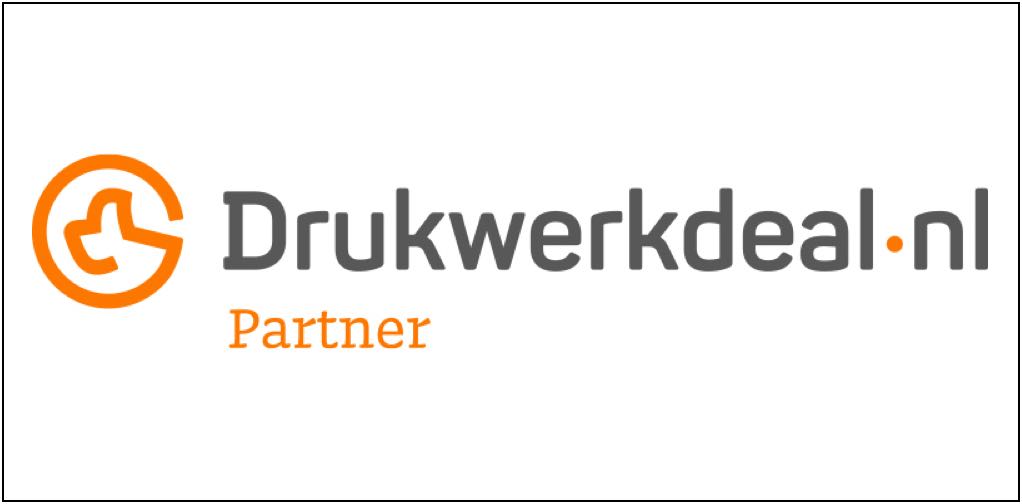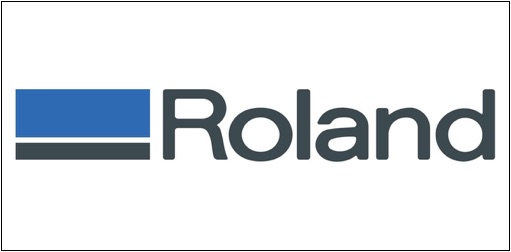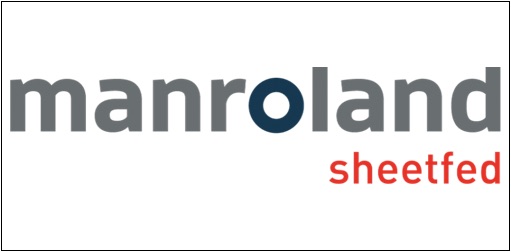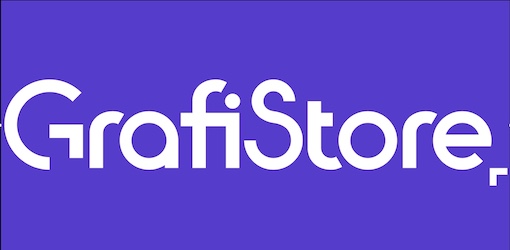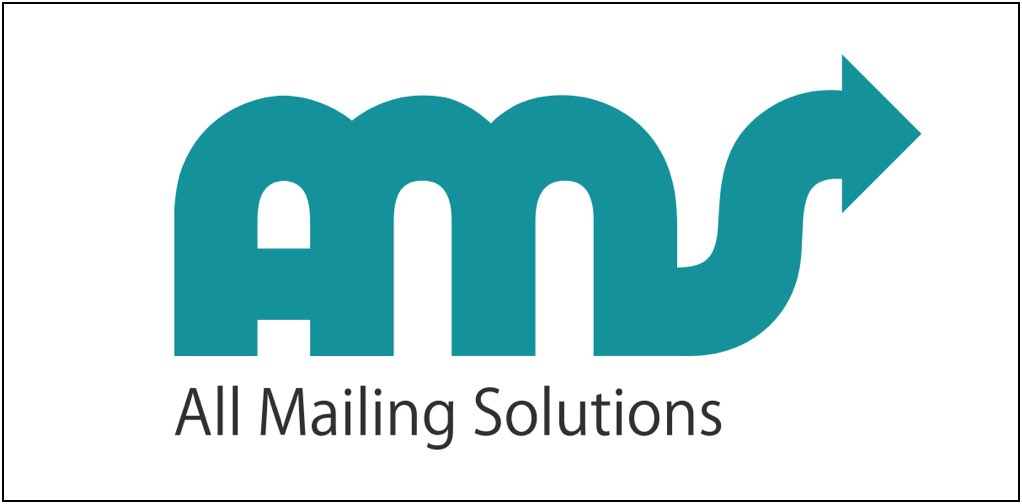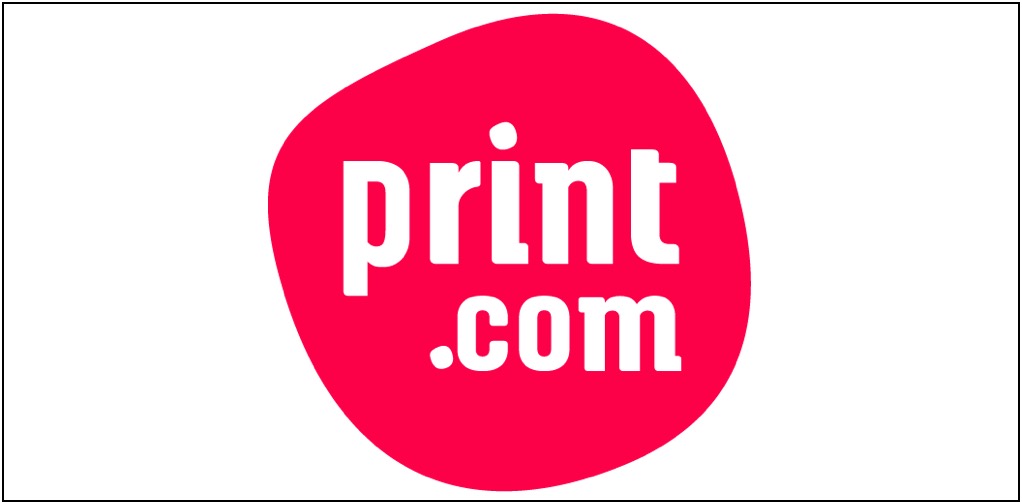Rob van den Braak
 If you are serious about improving your environmental impact, partnership may be the way to go. It can even have additional unexpected benefits for your business, unrelated to the main project. Partnering works not just between developers, but also across the developer/customer divide. Toray and Seacourt Printing, a UK printing company, have been working together on a new printing system to reduce Seacourt’s environmental impact.
If you are serious about improving your environmental impact, partnership may be the way to go. It can even have additional unexpected benefits for your business, unrelated to the main project. Partnering works not just between developers, but also across the developer/customer divide. Toray and Seacourt Printing, a UK printing company, have been working together on a new printing system to reduce Seacourt’s environmental impact.Toray is a huge company which derives a €10 billion income from synthetic and carbon fibres, plastics, films and chemicals, as well as waterless printing plates. This is the product for which Toray is best known in the graphics business. Waterless printing eliminates the water or dampening solutions used in conventional printing processes. Printing plates designed for the waterless process have a special silicone rubber coating that is ink resistant, repelling the ink from the plate’s nonimage areas.
Toray has been working with Seacourt Printing to develop the LightTouch printing system. LightTouch combines Toray’s waterless plates with specially formulated UV-curable inks and LED drying, to create a world first. Seacourt Printing’s use of this technology combination is part of the company’s strategy to cut its overall environmental impact. The company has saved over eight million litres of water since it first put the LightTouch system into full production, and its Volatile Organic Compound (VOC) emissions are down by 98.5% over the last few years.
Seacourt has been pushing waterless printing since 1997 and has strived to continually improve the process, launching LightTouch in 2015. The company has worked closely with Toray on this project. Both parties have invested the extensive time and resources to develop an innovative and effective system. LightTouch delivers improved environmental impact because it’s waterless and uses LED curing. LED curing uses much less energy than conventional curing technologies, so Seacourt’s energy emissions have also come down. Seacourt claims that the process delivers high quality performance as well as environmental sustainability.
Waterless printing has additional benefits. It removes the additives and chemicals required to manage water on press using water and dampening solutions. So by using the LightTouch process to produce its prints, Seacourt is minimising on press chemicals and waste as well as saving water. And the UV inks dry immediately so there is no need for offset sprays or sealers. This all saves money as well, and will do so long after the partnering project is done. The relationship with Toray has clearly paid off.
Laurel Brunner

This blog has been made possible by: Agfa Graphics (www.agfa.com), Digital Dots (http://digitaldots.org), drupa (www.drupa.com), EFI (www.efi.com), Fespa (www.fespa.com), Heidelberg (www.uk.heidelberg.com), Kodak (www.kodak.com/go/sustainability), Mondi (www.mondigroup.com/products), Pragati Offset (www.pragati.com), Ricoh (www.ricoh.com), Shimizu Printing (www.shzpp.co.jp), Splash PR (www.splashpr.co.uk), Unity Publishing (http://unity-publishing.co.uk) and Xeikon (www.xeikon.com).
Blokboek.com is the Dutch media partner of Verdrigris, a non-profit initiative which aims to realistically chart the real footprint of printing and which helps companies and organisations to lower that footprint. More information about Verdrigris can be found via this link.
Lees verder....
 Als het gaat om milieu verantwoord ondernemen dan loont samenwerking zoals Laurel Brunner in haar Verdigris blog aantoont. Als voorbeeld geeft ze de samenwerking tussen watervrije offsetplaten fabrikant Toray en Seacourt Printing. Onder de naam Light Touch ontwikkelden deze partners een productiemethode die het gebruik van Toray platen combineert met UV LED inkten. De combinatie levert een besparing in energie op en is minder milieubelastend. Lees de achtergronden van Light Touch in het blog van Laurel op onze artikelenpagina.
Als het gaat om milieu verantwoord ondernemen dan loont samenwerking zoals Laurel Brunner in haar Verdigris blog aantoont. Als voorbeeld geeft ze de samenwerking tussen watervrije offsetplaten fabrikant Toray en Seacourt Printing. Onder de naam Light Touch ontwikkelden deze partners een productiemethode die het gebruik van Toray platen combineert met UV LED inkten. De combinatie levert een besparing in energie op en is minder milieubelastend. Lees de achtergronden van Light Touch in het blog van Laurel op onze artikelenpagina.
 If you are serious about improving your environmental impact, partnership may be the way to go. It can even have additional unexpected benefits for your business, unrelated to the main project. Partnering works not just between developers, but also across the developer/customer divide. Toray and Seacourt Printing, a UK printing company, have been working together on a new printing system to reduce Seacourt’s environmental impact.
If you are serious about improving your environmental impact, partnership may be the way to go. It can even have additional unexpected benefits for your business, unrelated to the main project. Partnering works not just between developers, but also across the developer/customer divide. Toray and Seacourt Printing, a UK printing company, have been working together on a new printing system to reduce Seacourt’s environmental impact.Toray is a huge company which derives a €10 billion income from synthetic and carbon fibres, plastics, films and chemicals, as well as waterless printing plates. This is the product for which Toray is best known in the graphics business. Waterless printing eliminates the water or dampening solutions used in conventional printing processes. Printing plates designed for the waterless process have a special silicone rubber coating that is ink resistant, repelling the ink from the plate’s nonimage areas.
Toray has been working with Seacourt Printing to develop the LightTouch printing system. LightTouch combines Toray’s waterless plates with specially formulated UV-curable inks and LED drying, to create a world first. Seacourt Printing’s use of this technology combination is part of the company’s strategy to cut its overall environmental impact. The company has saved over eight million litres of water since it first put the LightTouch system into full production, and its Volatile Organic Compound (VOC) emissions are down by 98.5% over the last few years.
Seacourt has been pushing waterless printing since 1997 and has strived to continually improve the process, launching LightTouch in 2015. The company has worked closely with Toray on this project. Both parties have invested the extensive time and resources to develop an innovative and effective system. LightTouch delivers improved environmental impact because it’s waterless and uses LED curing. LED curing uses much less energy than conventional curing technologies, so Seacourt’s energy emissions have also come down. Seacourt claims that the process delivers high quality performance as well as environmental sustainability.
Waterless printing has additional benefits. It removes the additives and chemicals required to manage water on press using water and dampening solutions. So by using the LightTouch process to produce its prints, Seacourt is minimising on press chemicals and waste as well as saving water. And the UV inks dry immediately so there is no need for offset sprays or sealers. This all saves money as well, and will do so long after the partnering project is done. The relationship with Toray has clearly paid off.
Laurel Brunner

Dit blog wordt mogelijk gemaakt dankzij de bijdrage van: Agfa Graphics (www.agfa.com), Digital Dots (http://digitaldots.org), drupa (www.drupa.com), EFI (www.efi.com), Fespa (www.fespa.com), Heidelberg (www.uk.heidelberg.com), Kodak (www.kodak.com/go/sustainability), Mondi (www.mondigroup.com/products), Pragati Offset (www.pragati.com), Ricoh (www.ricoh.com), Shimizu Printing (www.shzpp.co.jp), Splash PR (www.splashpr.co.uk), Unity Publishing (http://unity-publishing.co.uk) and Xeikon (www.xeikon.com).
BlokBoek.com is de Nederlandse media-partner van Verdigris, een non-profit initiatief dat de werkelijke voetprint van druk- en printwerk die drukwerk achterlaat eerlijk in kaart wil brengen en dat bedrijven en organisatie steunt om die voetprint te verlagen.
Meer informatie over Verdigris vind je via deze link.
 Op drupa 1982 zag ik, net terug van twee jaar militaire dienst in Suriname, hoe rotatie offset als een disrupting techniek diepdruk rotatie tot een ouderwetse en dure druktechniek degradeerde. Dat kwam goed uit want mijn eerste schreden in de verkoop deed ik op dat moment bij Machinehandel Houtstra, de dealer voor Solna Offset, de Zweedse drukpersfabrikant die met zijn rotatie persen toen redelijk scoorde in Europa. Ook nu nog is offset rotatie voor hogere oplagen de goedkoopste en meest productieve druktechniek. Nieuwe ontwikkelingen zoals synchrone automatische plaatwisseling, inline colour controle, rol tot vel en niet te vergeten waterloos offset geven deze ‘oude’ techniek weer nieuw leven. Met hun futuristische bedieningconsoles voorzien van wide screen HD beeldschermen lijken deze moderne drukmonsters in geen enkel opzicht meer op de persen van 1982. Het zijn drukmonsters die met hun korte insteltijden en afdruksnelheden van meer dan 40.000 omwentelingen per uur offsetrotatie nog jarenlang levend zullen houden.
Op drupa 1982 zag ik, net terug van twee jaar militaire dienst in Suriname, hoe rotatie offset als een disrupting techniek diepdruk rotatie tot een ouderwetse en dure druktechniek degradeerde. Dat kwam goed uit want mijn eerste schreden in de verkoop deed ik op dat moment bij Machinehandel Houtstra, de dealer voor Solna Offset, de Zweedse drukpersfabrikant die met zijn rotatie persen toen redelijk scoorde in Europa. Ook nu nog is offset rotatie voor hogere oplagen de goedkoopste en meest productieve druktechniek. Nieuwe ontwikkelingen zoals synchrone automatische plaatwisseling, inline colour controle, rol tot vel en niet te vergeten waterloos offset geven deze ‘oude’ techniek weer nieuw leven. Met hun futuristische bedieningconsoles voorzien van wide screen HD beeldschermen lijken deze moderne drukmonsters in geen enkel opzicht meer op de persen van 1982. Het zijn drukmonsters die met hun korte insteltijden en afdruksnelheden van meer dan 40.000 omwentelingen per uur offsetrotatie nog jarenlang levend zullen houden.Digital Web
 Het invoeren en bedrukken van media via een rol materiaal is de snelste en mechanisch eenvoudigste oplossing voor een afdruksysteem. Het is dus logisch dat de ontwerpers van digitale afdruksystemen massaal voor deze methode kozen. Kodak was een van de eerste fabrikanten die met zijn Prosper persen oplossingen bood voor boekdrukkers. En toen Xeikon in 2008 zijn 8000 serie aankondigde, gebaseerd op zijn al in 1980 geïntroduceerde kleurafdruktechniek was het duidelijk dat digital web afdruktechnieken een grote rol zouden gaan spelen in onze industrie. Wil je meer lezen over de ontwikkeling van digital web en specifiek van wat Xeikon daar in betekende, download dan de InfoTrend publicatie van Jim Hamilton via onze download pagina.
Het invoeren en bedrukken van media via een rol materiaal is de snelste en mechanisch eenvoudigste oplossing voor een afdruksysteem. Het is dus logisch dat de ontwerpers van digitale afdruksystemen massaal voor deze methode kozen. Kodak was een van de eerste fabrikanten die met zijn Prosper persen oplossingen bood voor boekdrukkers. En toen Xeikon in 2008 zijn 8000 serie aankondigde, gebaseerd op zijn al in 1980 geïntroduceerde kleurafdruktechniek was het duidelijk dat digital web afdruktechnieken een grote rol zouden gaan spelen in onze industrie. Wil je meer lezen over de ontwikkeling van digital web en specifiek van wat Xeikon daar in betekende, download dan de InfoTrend publicatie van Jim Hamilton via onze download pagina.2016: De Digital Web drupa
 Drupa 2016 wordt ongetwijfeld een digital web drupa. Van compacte smalle baan oplossingen tot de gigantische meters brede printers voor golfkarton zullen menig ondernemer verleiden om in deze nieuwe markt te stappen. De toepassing van digital web is vooral voor verticale markten zoals label, direct mailing, (foto)boeken en verpakkingen interessant. Daar spelen factoren als snelle levertijden, kleine oplagen, variabele data en inline afwerking een belangrijke rol. Ook de grote kleuromvang van inkjet en de mogelijkheid om dekkend wit te printen tellen in deze nieuwe markten mee. Een kleuromvang die goed gedemonstreerd werd door de Screen Europa actie met een 2,5 meter brede Pantone waaier, een van de meest succesvolle Blokboek.com PR acties.
Drupa 2016 wordt ongetwijfeld een digital web drupa. Van compacte smalle baan oplossingen tot de gigantische meters brede printers voor golfkarton zullen menig ondernemer verleiden om in deze nieuwe markt te stappen. De toepassing van digital web is vooral voor verticale markten zoals label, direct mailing, (foto)boeken en verpakkingen interessant. Daar spelen factoren als snelle levertijden, kleine oplagen, variabele data en inline afwerking een belangrijke rol. Ook de grote kleuromvang van inkjet en de mogelijkheid om dekkend wit te printen tellen in deze nieuwe markten mee. Een kleuromvang die goed gedemonstreerd werd door de Screen Europa actie met een 2,5 meter brede Pantone waaier, een van de meest succesvolle Blokboek.com PR acties.Smalle baan oplossingen
 Voor verticale markten zoals labels, direct mailing, fotoboeken en verpakkingen is een grote baanbreedte niet altijd een voordeel. Smalle baan oplossingen zorgen niet alleen voor een lagere investering en een pers met een smalle voetprint, maar zijn ook qua bediening, onderhoud en storingen minder belastend dan superbrede drukgiganten. Voor smalle baan persen zijn er ook meer standaard in-line, near-line en off-line afwerking systemen beschikbaar. Afwerking die kan varieeren van simpel snijden en vouwen tot slitten, stansen, rillen, perforeren, pregen en koudfolie.
Voor verticale markten zoals labels, direct mailing, fotoboeken en verpakkingen is een grote baanbreedte niet altijd een voordeel. Smalle baan oplossingen zorgen niet alleen voor een lagere investering en een pers met een smalle voetprint, maar zijn ook qua bediening, onderhoud en storingen minder belastend dan superbrede drukgiganten. Voor smalle baan persen zijn er ook meer standaard in-line, near-line en off-line afwerking systemen beschikbaar. Afwerking die kan varieeren van simpel snijden en vouwen tot slitten, stansen, rillen, perforeren, pregen en koudfolie.
Rol tot rol, rol tot vel of inline afwerking
 Voor alle rotatie afdruktechnieken geldt dat afwerking een sleutelfactor is voor een lage kostprijs en het halen van steeds kortere levertijden. Rol tot rol en off-line afwerking zijn de eenvoudigste oplossingen. Oplossingen die ook nog meewerken aan het optimaal benutten van de productiecapaciteit van de pers die zijn snelheid niet hoeft aan te passen aan de afwerking en geen last heeft van de langere insteltijden die inline afwerking kan opleveren. De volgende stap is, zoals bijvoorbeeld Goss met zijn Folio al een paar drupa’s geleden liet zien, het op volle perssnelheid tot vellen snijden van de papierbaan. `Gecombineerd met een automatische pallet uitvoer worden met dit soort systemen productievolumes bereikt waarvan we in 1982 alleen maar konden dromen.
Voor alle rotatie afdruktechnieken geldt dat afwerking een sleutelfactor is voor een lage kostprijs en het halen van steeds kortere levertijden. Rol tot rol en off-line afwerking zijn de eenvoudigste oplossingen. Oplossingen die ook nog meewerken aan het optimaal benutten van de productiecapaciteit van de pers die zijn snelheid niet hoeft aan te passen aan de afwerking en geen last heeft van de langere insteltijden die inline afwerking kan opleveren. De volgende stap is, zoals bijvoorbeeld Goss met zijn Folio al een paar drupa’s geleden liet zien, het op volle perssnelheid tot vellen snijden van de papierbaan. `Gecombineerd met een automatische pallet uitvoer worden met dit soort systemen productievolumes bereikt waarvan we in 1982 alleen maar konden dromen. The improvement in productivity, which has seen output rise to a current rate of 36 million printed sheets per year, is the result of three key benefits of the AMS LED UV curing technology Deltabach Director, Marc de Jong explains below:
The improvement in productivity, which has seen output rise to a current rate of 36 million printed sheets per year, is the result of three key benefits of the AMS LED UV curing technology Deltabach Director, Marc de Jong explains below:
“When we introduced the B1 Heidelberg to replace a B2 press 5 years ago, we specified a standard delivery, but included a coater because it was an important element of our work – though it meant we had to run the press slower when coating. Since then the demand for coating has increased significantly, so we were losing productivity. With the AMS system we don’t need to coat, so we can run every job at up to 16,500 sheets per hour – that’s 20% faster.”
“Second, because the sheets printed with AMS LED UV curing are dry in the delivery they are ready for immediate printing on the reverse side and downstream processing. This means we can promise better turnaround times to our customers – even on the same day – and it has a major impact on our pressroom practice. Previously, on turn-and-tumble work, especially where uncoated or smooth papers were involved, the operator would output 8 plates because the job would have to wait – maybe overnight, or even longer – before the piles could be turned and put back through the press. Of course, then another 10 minutes would be lost in getting the settings back to the correct levels… now we just turn and go ahead. If you try to quantify that – it’s amazing. It also gives another dimension to our planning because the timings have become predictable.”
“And thirdly, by eliminating spray powder we not only make life easier on the press and in the bindery, we are increasing the production time available on the press,” continues Marc de Jong. “We used to take 3 hours at the end of each week to de-powder the press, and the same was true of a lot of the finishing machines, now that is no longer required it becomes more available production up-time. This all factors in to our bottom line. We also save as much as one more hour each day because the LED UV inks can stay in the ducts overnight, and even more time at the coating unit, where we used to have to change plates and clean up between different jobs.”
The impact of the changes on workflow is clearly visible in the Deltabach press hall where a large floor space is marked out into eight ‘lanes’. This was formerly the marshaling yard where pallets of print were held and shuffled as they waited to dry before turning and reverse printing, or moving to post-press. Now only two lanes are used as a buffer zone for print that is immediately ready for the next process, leaving plenty of free space for, possibly, the next press investment.
With as much as 70% of its business being with agencies, brokers and other printers, production efficiency is essential for Deltabach to protect its margins while keeping its prices competitive. The advantages of the AMS LED UV technology are helping win new business and Mr de Jong concludes, “The moment we saw the AMS LED UV solution in operation we were convinced that it was the right choice for us.
At drupa, GMG will showcase its latest software, a clever Photoshop plug-in, new proofing media, and its extended range of services (Hall 8A, Stand B10)
 The GMG booth has always been an essential destination for leading color management experts visiting drupa. For over 30 years, the Tubingen, Germany-based company has been providing reliable colors and maximum productivity with its highly innovative software portfolio.
The GMG booth has always been an essential destination for leading color management experts visiting drupa. For over 30 years, the Tubingen, Germany-based company has been providing reliable colors and maximum productivity with its highly innovative software portfolio.
“We supply color management solutions based on superb technology that respond to the challenges facing the printing industry,” says Robert Weihing, Managing Director, GMG. “What sets us apart from the competition are our passionate experts who really enjoy sharing their considerable know-how with users. Thanks to our GMG Academy and our GMG services and consulting offering, we’re in a perfect position to do this.”
As well as extending its know-how division, GMG is also redesigning its high-quality proof media portfolio. The successful GMG proof media range is being expanded and reorganized into two lines: GMG ProofMedia Premium and GMG ProofMedia Studio. The Premium line stands for seamless quality and reliable contract proofing, while the Studio range is targeted at creative professionals who need to rapidly produce accurate colors during the design process. As a Fogra development partner GMG was involved in defining the new FOGRA51/52 characterization data right from the start and, as a result, GMG’s new media portfolio also includes proof media with OBAs (optical brightening agents).
The new standards have also been fully integrated into GMG software. Reliable colors – even for markets where working with standards is uncommon – are guaranteed by GMG OpenColor. Due to its revolutionary spot color functionality, this profiling tool serves as a genuine printing machine simulator, particularly for the packaging market. GMG OpenColor can calculate profiles that allow for the precise prediction of results despite incredible levels of complexity, handling the effects of overprinting, changes in substrates, or alterations to the color sequence. A new feature in GMG OpenColor is the ability to calculate profiles for halftone proofs. Plus, to guarantee color-accurate print output of data calculated in this way, GMG ColorProof is also being updated. Long printer set-up times and alignment phases are dramatically reduced – even if only CMYK printing is involved.
As a special bonus for users of Adobe Photoshop, GMG is launching an ingenious plug-in just in time for drupa. This compact tool is known as GMG ColorPin. With it, Photoshop users will be able to carry out operations that were previously only possible with the help of complex workarounds and a lot of manual intervention. Just the use of the MX4 separations, which are clearly superior to ICC-based solutions, makes manual corrections largely unnecessary. GMG ColorPin is incredibly efficient and brings unprecedented levels of flexibility to image processing. As a result, Photoshop users can apply profiles specifically to individual levels or masked areas. In addition, the Pro version of GMG ColorPin also allows users to utilize their own profiles and the color reduction functionality already familiar from the GMG InkOptimizer tool. A special version for the packaging industry adds further features to offer maximum levels of quality and performance for specialized Photoshop users. GMG will be presenting these and other innovations at drupa in its own booth, at Hall 8A B10. In addition, GMG is also involved in the drupa innovation park (Hall 7 B15).
Lees verder....
 At drupa 1982 I saw, only just returned from 2 years military service in Surinam, how web offset became a disrupting technology which made rotogravure an expensive and old-fashioned technology. This was great for me as I had just started in sales at Machinehandel Houtstra, distributor for Solna Offset, the Swedish press manufacturer with relatively popular web offset presses.
At drupa 1982 I saw, only just returned from 2 years military service in Surinam, how web offset became a disrupting technology which made rotogravure an expensive and old-fashioned technology. This was great for me as I had just started in sales at Machinehandel Houtstra, distributor for Solna Offset, the Swedish press manufacturer with relatively popular web offset presses.
Web offset continues to be the most economic and productive technology for larger volumes. Read here the parallel between digital web at drupa 2016 and web offset at drupa 1982.
Lees verder....
 At drupa 1982 I saw, only just returned from 2 years military service in Surinam, how web offset became a disrupting technology which made rotogravure an expensive and old-fashioned technology. This was great for me as I had just started in sales at Machinehandel Houtstra, distributor for Solna Offset, the Swedish press manufacturer with relatively popular web offset presses.
At drupa 1982 I saw, only just returned from 2 years military service in Surinam, how web offset became a disrupting technology which made rotogravure an expensive and old-fashioned technology. This was great for me as I had just started in sales at Machinehandel Houtstra, distributor for Solna Offset, the Swedish press manufacturer with relatively popular web offset presses.
Web offset continues to be the most economic and productive technology for larger volumes. Recent developments such as synchronised automated plate changes, inline colour management, roll to sheet and, of course, waterless offset are reviving this “old” technology. With futuristic consoles and wide screen HD screens these modern print monsters no longer resemble the presses of 1982. Print monsters with short make-ready times and print speeds for more than 40,000 rotations per hour which will keep web offset alive for the foreseeable future.
2016: The Digital Web drupa
 Drupa 2016 will without a doubt be a digital web drupa. The range, from compact small web solutions to gigantic meters wide printers for corrugated board, will seduce many printers to have a go as well. Digital web is best suited for vertical markets such as labels, direct mail, (photo)books and packaging. Issues such as short turn around times, small volumes, variable data and inline finishing play a huge role here. The wide array of colours of inkjet and the possibility of opaque white also play a part. The extended colour range was clearly demonstrated by Screen Europe when they printed a 2,5 meter wide Pantone colour fan – one of Blokboek.com´s most successful PR stunts.
Drupa 2016 will without a doubt be a digital web drupa. The range, from compact small web solutions to gigantic meters wide printers for corrugated board, will seduce many printers to have a go as well. Digital web is best suited for vertical markets such as labels, direct mail, (photo)books and packaging. Issues such as short turn around times, small volumes, variable data and inline finishing play a huge role here. The wide array of colours of inkjet and the possibility of opaque white also play a part. The extended colour range was clearly demonstrated by Screen Europe when they printed a 2,5 meter wide Pantone colour fan – one of Blokboek.com´s most successful PR stunts.Small web solutions

Roll to roll, roll to sheet or in-line finishing
 For all web print techniques the key factor for success is low cost-price and short turn around and finishing plays a very important part in both. Roll to roll and off-line finishing are the simplest solutions. Solutions which can also contribute to optimum use of production capacity by avoiding lower speed to enable finishing and the longer make ready times by setting up finishing options.
For all web print techniques the key factor for success is low cost-price and short turn around and finishing plays a very important part in both. Roll to roll and off-line finishing are the simplest solutions. Solutions which can also contribute to optimum use of production capacity by avoiding lower speed to enable finishing and the longer make ready times by setting up finishing options.Inline finishing is the most elegant of finishing options. The end product literally rolls off the press. You will see many examples at drupa 2016, from books to brochures to ingenious direct mail solutions which are delivered ready to send to readers. Muller Martine´s presentation of “PDF In Book Out” and the Bobst Packaging Line which resembles a high speed train are not to be missed. Solutions which prove that the print industry has become a real industry. An industry which, with the right media mix including electronic, is here to stay.
 Op drupa 1982 zag ik, net terug van twee jaar militaire dienst in Suriname, hoe rotatie offset als een disrupting techniek diepdruk rotatie tot een ouderwetse en dure druktechniek degradeerde. Dat kwam goed uit want mijn eerste schreden in de verkoop deed ik op dat moment bij Machinehandel Houtstra, de dealer voor Solna Offset, de Zweedse drukpersfabrikant die met zijn rotatie persen toen redelijk scoorde in Europa. Ook nu nog is offset rotatie voor hogere oplagen de goedkoopste en meest productieve druktechniek. Lees hier de paralel tussen digitale web persen op drupa 2016 en rotatie offset op drupa 1982
Op drupa 1982 zag ik, net terug van twee jaar militaire dienst in Suriname, hoe rotatie offset als een disrupting techniek diepdruk rotatie tot een ouderwetse en dure druktechniek degradeerde. Dat kwam goed uit want mijn eerste schreden in de verkoop deed ik op dat moment bij Machinehandel Houtstra, de dealer voor Solna Offset, de Zweedse drukpersfabrikant die met zijn rotatie persen toen redelijk scoorde in Europa. Ook nu nog is offset rotatie voor hogere oplagen de goedkoopste en meest productieve druktechniek. Lees hier de paralel tussen digitale web persen op drupa 2016 en rotatie offset op drupa 1982
Lees verder....
 Op drupa 1982 zag ik, net terug van twee jaar militaire dienst in Suriname, hoe rotatie offset als een disrupting techniek diepdruk rotatie tot een ouderwetse en dure druktechniek degradeerde. Dat kwam goed uit want mijn eerste schreden in de verkoop deed ik op dat moment bij Machinehandel Houtstra, de dealer voor Solna Offset, de Zweedse drukpersfabrikant die met zijn rotatie persen toen redelijk scoorde in Europa. Ook nu nog is offset rotatie voor hogere oplagen de goedkoopste en meest productieve druktechniek. Lees hier de parallel tussen digitale web persen op drupa 2016 en rotatie offset op drupa 1982.
Op drupa 1982 zag ik, net terug van twee jaar militaire dienst in Suriname, hoe rotatie offset als een disrupting techniek diepdruk rotatie tot een ouderwetse en dure druktechniek degradeerde. Dat kwam goed uit want mijn eerste schreden in de verkoop deed ik op dat moment bij Machinehandel Houtstra, de dealer voor Solna Offset, de Zweedse drukpersfabrikant die met zijn rotatie persen toen redelijk scoorde in Europa. Ook nu nog is offset rotatie voor hogere oplagen de goedkoopste en meest productieve druktechniek. Lees hier de parallel tussen digitale web persen op drupa 2016 en rotatie offset op drupa 1982.
Lees verder....
 FESPA Eurasia 2016, to be held from 8-11 December, CNR Expo, Istanbul, is beginning to take shape as more and more exhibitors commit to a presence at this market-leading event, which showcases the latest wide format, screen and textile opportunities available throughout the Eurasian market.
FESPA Eurasia 2016, to be held from 8-11 December, CNR Expo, Istanbul, is beginning to take shape as more and more exhibitors commit to a presence at this market-leading event, which showcases the latest wide format, screen and textile opportunities available throughout the Eurasian market.
Post-show data from the 2015 show highlights that 9,231 unique visitors attended the four day event, close to a 10% increase from the 2014 edition, with 10,838 visits in total. This substantial year-on-year growth since the inaugural show in 2013 has cemented it as a ‘must attend’ event for manufacturers, both local and international, as Mike Horsten, General Manager Marketing EMEA, Mimaki Europe verifies: “Identifying future growth areas and opportunities within the Eurasian market is key.”
A high quality of visitor
Post-show statistics confirm 82% of visitors were involved in the decision making process for purchasing new equipment, a clear indicator of the high calibre of those attending, with the potential for making further investments within their business. “We had some good business opportunities, and the floors were full of visitors,” adds Heiner Rupperath, Product Manager (IPM) and Marketing Manager/Environment Officer, Brother GmbH.
With Eurasia currently undergoing a period of strong growth, the data demonstrated that visitors held a combined spending budget of approximately €1.5 billion. For exhibiting companies, this provided a huge opportunity to gain new leads, as well as develop relationships further with existing customers and showcase their latest technologies to a large number of visitors. In fact, 75% of exhibitors consider that being present at FESPA Eurasia is key to their marketing strategy, symbolic of the quality of the show.
Michael Ryan, Group Exhibition Manager, FESPA comments: “We are delighted that the data from the 2015 edition confirms our predictions for the show, with exhibitors reaping the benefits from the high quality and quantity of visitor it attracted. This region is undergoing tremendous growth, and it’s now more crucial than ever for digital wide format, screen print, signage and garment décor companies to consider the new opportunities that participating in an event like this could offer. We are already anticipating another strong show with FESPA Eurasia 2016.”
Quotes from FESPA Eurasia 2015 exhibitors
“FESPA Eurasia 2015 was again very successful this year and we were delighted to be a part of the show. The exhibition manages to attract key target audiences from many different countries, with most visitors coming from the Middle East and East and Central Europe. We had very interesting encounters with visitors, who were keen to see our machines in action with some of our new products. We believe that the strength of FESPA Eurasia lies in their outstanding organisation and expert team, which keeps up with the recent changes in the market and identifies future growth areas and opportunities.”
Mike Horsten, General Manager Marketing EMEA at Mimaki Europe
“We have worked with the FESPA organisation before and this was our first time at the Eurasia show. As usual, the FESPA team did a great job of taking care of us, and the exhibition centre is in a great location near the airport. The show met our expectations with regards to visitor numbers and their interest in our products, and we will continue to exhibit at FESPA shows worldwide.”
Peter Fagrell, Development Manager, CWT Worktools
“Overall, the quality of the show was good for us, and as a result we had some good business opportunities. On the Saturday, the floors were full of visitors, and we really enjoyed having customers come on to the booth to talk about our products. Our customers were from all different regions of Turkey, as well as international, further proof that FESPA Eurasia is an international fair. We are looking forward to FESPA Eurasia 2016 as an established event in this important region.”
Heiner Rupperath, Product Manager IPM (Industrial Printing Machines), Marketing Manager/Environment officer, BROTHER INTERNATIONALE INDUSTRIEMASCHINEN GMBH
For more information about FESPA Eurasia, visit www.fespaeurasia.com.
ENDS
About FESPA
Founded in 1962, FESPA is a global federation of 37 member associations for the screen printing, digital printing and textile printing community. FESPA’s dual aim is to promote screen printing and digital imaging and to share knowledge about screen and digital printing with its members across the world, helping them to grow their businesses and learn about the latest developments in their fast growing industries.
FESPA Profit for Purpose
Our shareholders are the industry. FESPA has invested millions of Euros into the global printing community over the last seven years, supporting the growth of the market. For more information visit www.fespa.com
FESPA Census
The FESPA Print Census is a global research project to understand the wide format, screen and digital print community. It is the largest data gathering project of its kind.
Forthcoming FESPA events include:
• FESPA Brasil 2016, 6-9 April 2016, Expo Center Norte, São Paulo, Brazil
• FESPA Southern European Congress, 19-20 April 2016, Milan, Italy
• FESPA Mexico 2016, 18-20 August 2016, Centro Banamex, Mexico
• FESPA Africa 2016, 7-9 September 2016, Gallagher Convention Centre, Johannesburg, South Africa
• FESPA China 2016, 21-23 November 2016, Poly World Trade Centre, Guangzhou
• FESPA Eurasia 2016, 8-11 December 2016, CNR Expo, Istanbul, Turkey
• FESPA 2017, 8-12 May 2017, Hamburg Messe, Hamburg, Germany
Issued on behalf of FESPA by AD Communications
For further information, please contact:
Ellie Bunce, Cerys Traylor Lorraine Harrow
AD Communications FESPA
Tel: + 44 (0) 1372 464470 Tel: +44 (0) 1737 228161
Email: ebunce@adcomms.co.uk Email: Lorraine.harrow@fespa.com
Email: ctraylor@adcomms.co.uk Website: www.fespa.com
Website: www.adcomms.co.uk
 Typos can be very costly as many print shops know. But not as costly as the mistake hackers made whilst preparing transfers from the Bangladesh Central Bank they hacked. Several transfers for about 81 million US$ had already gone through when they mistyped Foundation so that it read Fandation. Staff at Deutsche Bank noticed this and after checking it appeared that the Bangladeshi bank was hacked. A further 850 million US$ was prevented from being transferred out.
Typos can be very costly as many print shops know. But not as costly as the mistake hackers made whilst preparing transfers from the Bangladesh Central Bank they hacked. Several transfers for about 81 million US$ had already gone through when they mistyped Foundation so that it read Fandation. Staff at Deutsche Bank noticed this and after checking it appeared that the Bangladeshi bank was hacked. A further 850 million US$ was prevented from being transferred out.
Very costly mistake, but one that proves that good IT security measures are necessary for any company or organisation. We at Blokboek.com have long ago learned that when we were hacked by an illegal gambling site which disabled our site for several hours.
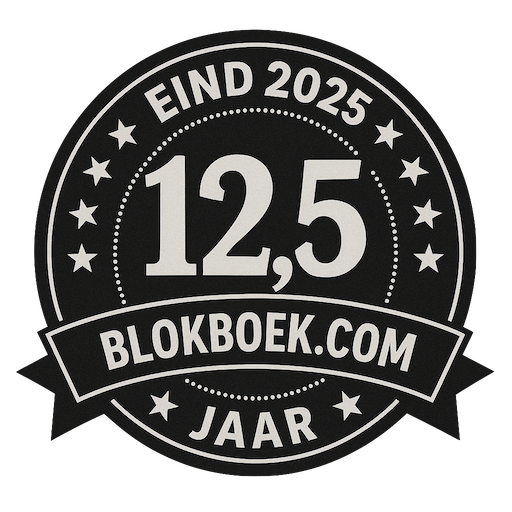
De trainingen voor 2022 staan gereed. Kijk voor het volledige online aanbod van bestaande- en nieuwe trainingen op de website.
BLOKBOEK.COM EN PRINTMEDIANIEUWS: HET OPTIMALE DOELGROEP BEREIK


